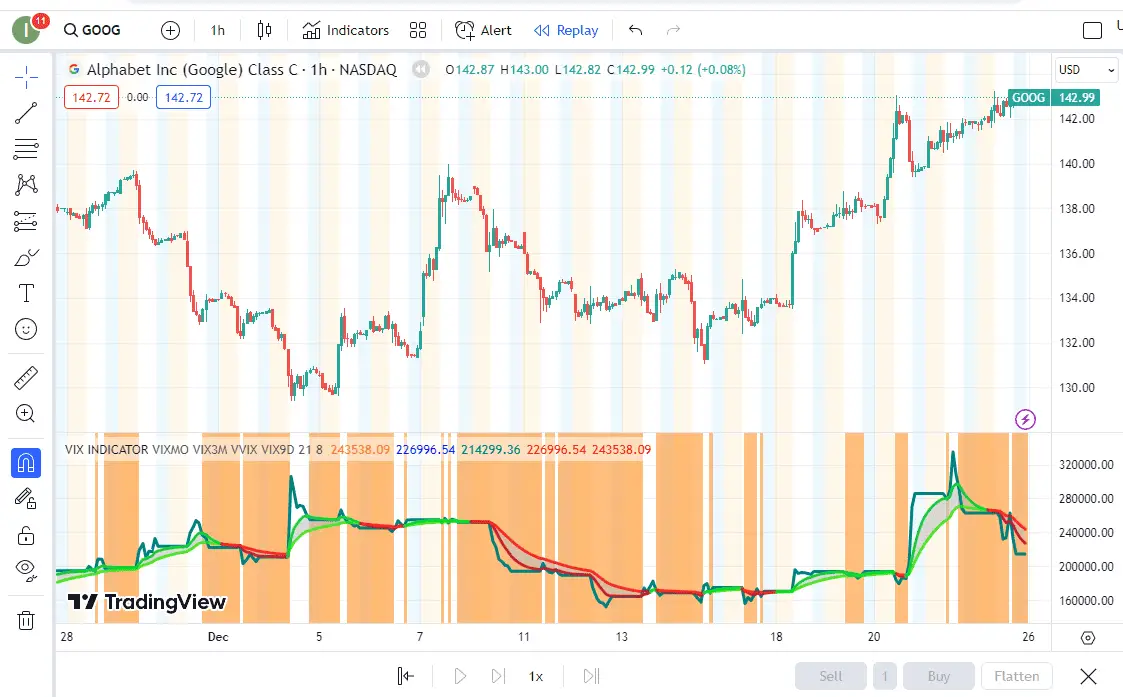Stock market volatility refers to the degree of variation in the price of stocks over some time. This volatility is primarily driven by supply and demand dynamics, where investor perceptions about the prospects of a company, industry, or the economy at large can significantly influence stock prices. Economic indicators, such as inflation rates, interest rate changes, and employment data, also play a critical role in shaping market sentiment and can lead to price fluctuations.
Additionally, geopolitical events and unexpected occurrences, like natural disasters or political instability, can create uncertainty, leading to volatility. Market psychology and investor behavior, often influenced by media and news, contribute to rapid shifts in market mood, causing prices to rise or fall sharply. Lastly, technological factors, including algorithmic trading and high-frequency trading systems, can amplify movements in the stock market, making it more susceptible to rapid changes.

What Moves VIX 75?
The VIX 75, also known as the Volatility Index, primarily moves based on market expectations of volatility derived from the price of S&P 500 index options; it reflects investor sentiment and market uncertainty. Overall, stock market volatility is influenced by various factors, including economic indicators, geopolitical events, and investor behavior, which collectively impact the confidence and decision-making of market participants, leading to fluctuations in stock prices.
What is VIX 75? The VIX 75, commonly known as the VIX, measures the stock market’s expectation of volatility, mainly focusing on the S&P 500 index. VIX derives its value from the prices of S&P 500 index options, both calls and puts, which are contracts giving investors the right to buy or sell the index at set prices. The importance of these options lies in their use by investors to hedge against or speculate on future movements of the index, making their prices reflect anticipated market fluctuations. The VIX primarily looks at options with near-term expiration dates, typically within 30 days, ensuring that it is a current market sentiment indicator.
The methodology behind the VIX’s calculation is complex, involving a wide range of strike prices of the options. It considers implied volatility, an investor’s expectation of the stock index’s future volatility derived from the option’s market price. Higher prices of these options suggest more significant uncertainty and higher expected volatility, and vice versa. Thus, the VIX is often called the “fear gauge” or “fear index,” as it increases when investors expect higher volatility, often during market downturns or economic turmoil.
Here is a list of ideas that move VIX 75:
- Investor Sentiment and Expectations:
- The VIX rises when investors expect higher volatility in the stock market.
- Negative news, economic downturns, or political instability can increase investor anxiety, leading to higher VIX values.
- Economic Indicators:
- Economic reports such as GDP growth rates, employment data, and inflation can sway market expectations.
- Positive economic indicators generally lower the VIX as they imply stability, whereas negative indicators can increase it.
- Monetary Policy and Interest Rates:
- Decisions by central banks on interest rates can significantly impact market volatility.
- Higher interest rates or tight monetary policies can increase market uncertainty, raising the VIX.
- Geopolitical Events:
- Wars, elections, and diplomatic conflicts can cause sudden and unpredictable market movements.
- Such events can lead to a spike in the VIX as investors anticipate higher market risk.
- Technological Factors:
- Algorithmic and high-frequency trading can amplify market movements.
- Rapid trading strategies can lead to quick changes in market sentiment, affecting the VIX.
- Market Liquidity:
- Liquidity, or the ease with which assets can be bought or sold, influences volatility.
- Lower liquidity can lead to higher volatility and a higher VIX.
- Market Psychology:
- Herd behavior and overreaction to news can cause markets to move irrationally.
- Such psychological factors can result in increased volatility and a higher VIX.
- Corporate Earnings and Forecasts:
- Company earnings reports and future earnings projections can influence market expectations.
- Positive or negative surprises in earnings can lead to significant market swings and affect the VIX.
- Global Economic Events:
- International events like a financial crisis in a significant economy can impact global markets.
- Such events can cause widespread uncertainty, increasing the VIX and market volatility.
- Supply and Demand Dynamics in the Options Market:
- The VIX is calculated based on S&P 500 option prices driven by supply and demand.
- High demand for protective put options can raise the VIX, reflecting increased market fear.
Each of these factors interplays to shape the level of the VIX and overall stock market volatility, reflecting the complex and interconnected nature of financial markets.
Conclusion
The VIX, often labeled as the market’s “fear gauge,” is a critical barometer for investor sentiment and expectations about market volatility, particularly in the short term. Its fluctuations are influenced by many factors, including economic indicators, geopolitical events, and market psychology, which collectively shape investor perceptions and market dynamics. Therefore, the VIX is an essential tool for investors and analysts, offering insights into the market’s risk and uncertainty levels and helping inform investment strategies in turbulent market conditions.
























